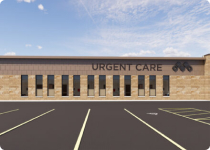Close Filters
Showing 1-20 of 286 results

A Final Salute
November 13, 2024

Encompassing Compassion
November 7, 2024

To Teach Their Own
October 31, 2024

Social Survivor
October 3, 2024

Influenza and seasonal vaccines now available at Monument Health
October 2, 2024

Hot Springs Clinic announces influenza vaccine clinic
September 27, 2024

Same-day appointments coming to Spearfish Urgent Care, Oct. 1
September 27, 2024

Marcia Taylor, Golden Girl
September 26, 2024

Spearfish Clinic, North Avenue welcomes two new pediatricians
September 17, 2024

Custer Clinic welcomes new family medicine physician
September 17, 2024

Same-day appointments coming to Custer Clinic, Oct. 1
September 9, 2024

Sweetheart of the Rodeo
September 3, 2024

Rise and Sunshine: A Cycle of Healing
August 22, 2024






